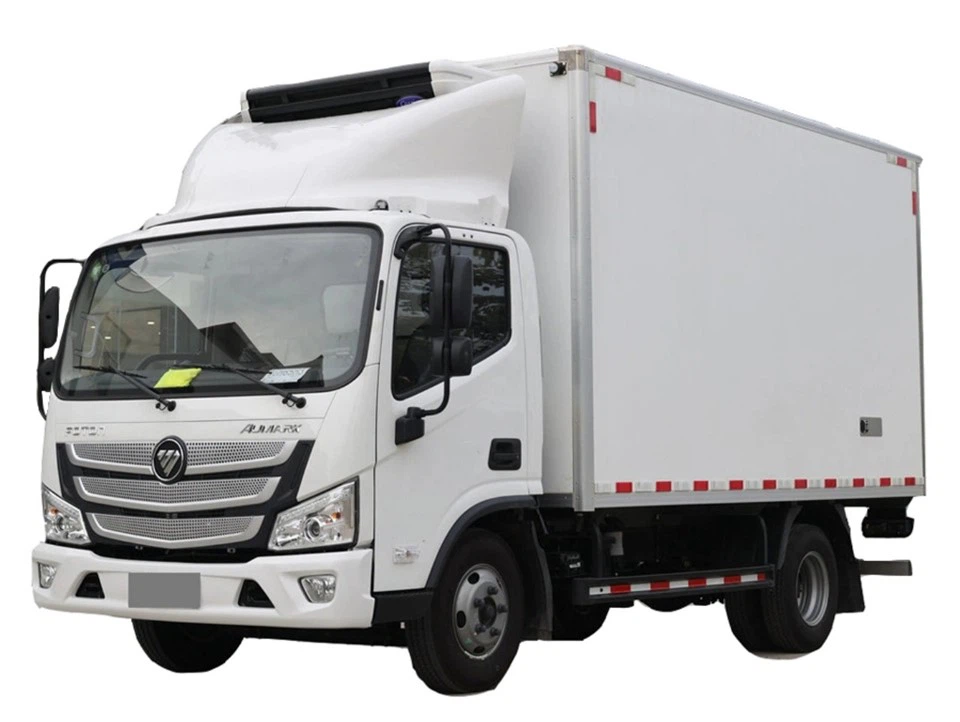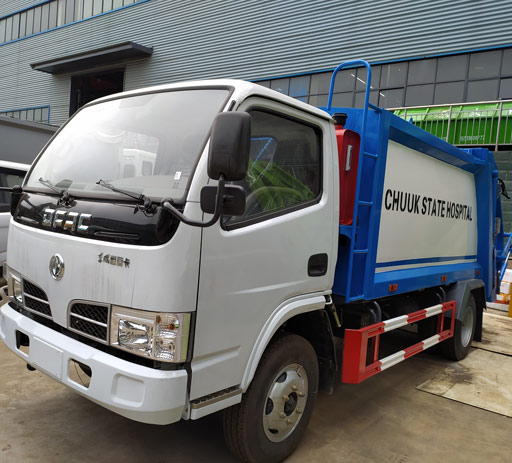Full Truck vs Semi Truck: Understanding the Key Differences

When it comes to the transportation and logistics industry, understanding the nuances between different types of vehicles is essential. The terms “full truck” and “semi truck” are often used interchangeably, but they refer to distinct types of vehicles designed for various freight-hauling purposes. This article aims to provide a thorough comparison of full trucks and semi trucks, exploring their designs, capabilities, and applications. Whether you’re a logistics professional or simply curious about the intricacies of trucking, this comprehensive guide will inform and enhance your knowledge.
What is a Full Truck?
A full truck refers to a complete vehicle that is designed to carry goods from one location to another without a detachable trailer. It typically has a permanent cargo area integrated into the vehicle’s chassis.

Design and Structure of a Full Truck

Full trucks come in various designs and configurations, with common types including:
- Box Trucks
- Dump Trucks
- Flatbed Trucks
- Refrigerated Trucks
Each of these categories serves specific purposes and offers distinct features.
Examples of Full Trucks
| Type of Full Truck | Description | Common Uses |
|---|---|---|
| Box Truck | Enclosed cargo area | Moving, furniture delivery |
| Dump Truck | Tilting cargo bed | Construction, waste management |
| Flatbed Truck | Open cargo area | Building materials, equipment transport |
| Refrigerated Truck | Temperature-controlled cargo space | Food delivery, pharmaceuticals |
What is a Semi Truck?
A semi truck, often referred to as a tractor-trailer or articulated truck, consists of two main components: the tractor (the front part that contains the engine) and the trailer (the detachable part where the cargo is carried). This design allows for greater flexibility in transporting various types of goods.
Design and Structure of a Semi Truck
Semi trucks have a unique design that enables them to transport loads that can be easily swapped out based on shipping requirements. Key components include:
- Tractor
- Trailer
- Fifth Wheel Coupling
- Air Suspension System
Types of Semi Truck Trailers
| Type of Trailer | Description | Common Uses |
|---|---|---|
| Dry Van | Enclosed, non-refrigerated | General freight |
| Flatbed Trailer | Open surface | Heavy equipment, building materials |
| Reefer Trailer | Temperature-controlled | Food, pharmaceuticals |
| Lowboy Trailer | Heavy-duty, low to the ground | Construction machinery |
Key Differences Between Full Trucks and Semi Trucks
Flexibility and Versatility
One of the primary differences between full trucks and semi trucks is their flexibility. Semi trucks are known for their versatility, as they can easily switch trailers to accommodate various types of cargo. Full trucks, while capable, generally are limited to their fixed cargo bed.
Cargo Capacity
In terms of cargo capacity, semi trucks typically have a higher capacity than full trucks. The combination of tractor and trailer allows semi trucks to transport heavier loads over long distances.
Cost-Effectiveness
Cost is another significant factor. Full trucks usually have lower initial purchase prices compared to semi trucks. However, semi trucks can be more economical for larger shipments due to their higher cargo capacity and efficiency in fuel consumption over long distances.
Maintenance and Operation Costs
Operating and maintaining a full truck can sometimes be less expensive than a semi truck, mainly due to the fewer components and simpler design. On the other hand, semi trucks may incur higher maintenance costs, but they are also often more fuel-efficient.
Operational Uses and Scenarios
When to Use Full Trucks
Full trucks are ideal for:
- Local deliveries where versatility and compactness are key.
- Transporting smaller loads that don’t require a trailer.
- Frequent stops or routes where there is limited space for maneuvering a long vehicle.
When to Use Semi Trucks
Semi trucks are best for situations such as:
- Long-haul freight transportation that requires versatile loading options.
- Transporting larger loads that exceed the capacity of full trucks.
- Industries that require frequent trailer swaps for different types of cargo.
Safety Considerations
Full Truck Safety
Full trucks are generally easier to maneuver, reducing the chances of accidents in tight spaces. However, they may have limitations in terms of weight distribution and load capacity, which can affect braking and stability.
Semi Truck Safety
Semi trucks, due to their size and weight, can present more significant safety challenges. It is crucial for drivers to undergo rigorous training to handle such vehicles safely. Proper weight distribution in trailers is critical to maintaining stability and preventing rollovers.
Environmental Impact
Emissions Comparison
Both full trucks and semi trucks contribute to emissions, but semi trucks tend to be more fuel-efficient in transporting larger loads over long distances. Advancements in technology, such as the use of alternative fuels and electrification, are also impacting both vehicle types.
Efficiency in Transportation
Choosing the right vehicle can contribute to reduced environmental impact. Efficient load management and route planning can minimize fuel consumption and emissions for both full and semi trucks.
Cost Breakdown

| Cost Factor | Full Truck | Semi Truck |
|---|---|---|
| Initial Purchase Price | Lower | Higher |
| Maintenance Costs | Usually lower | Higher |
| Fuel Efficiency | Less efficient for long hauls | More efficient for larger shipments |
| Insurance Costs | Lower | Higher due to size and risk |
Choosing the Right Truck for Your Needs
Factors to Consider
When choosing between a full truck and a semi truck, consider the following factors:
- Type and volume of cargo
- Route specifics (local vs long-haul)
- Budget for acquisition and operating costs
- Driver training and experience
Consulting with Professionals
If unsure about which vehicle best suits your transportation needs, consulting with logistics and transportation experts can provide valuable insights and recommendations tailored to your specific situation.
FAQ Section
What’s the main difference between a full truck and a semi truck?
The main difference lies in design. A full truck has an integrated cargo area, while a semi truck consists of a separate tractor and trailer.
Which truck type is more fuel-efficient?
Generally, semi trucks are more fuel-efficient when carrying larger loads over long distances.
Can full trucks be used for long-haul deliveries?
While they can be used for long-haul deliveries, they are typically less efficient than semi trucks for such purposes.
Are safety regulations different for full trucks and semi trucks?
Safety regulations can vary based on vehicle size, weight, and type. Semi trucks are subject to more stringent regulations due to their size and potential impact on road safety.
What are the licensing requirements for driving full trucks vs. semi trucks?
Driving semi trucks generally requires a commercial driver’s license (CDL) due to their complexity and size, while full trucks may have less stringent requirements depending on their weight and cargo capacity.
How do I decide which truck to purchase for my business?
Consider your typical freight size, routes, and budget. Analyzing your operational needs can help determine whether a full or semi truck is more appropriate for your business.
